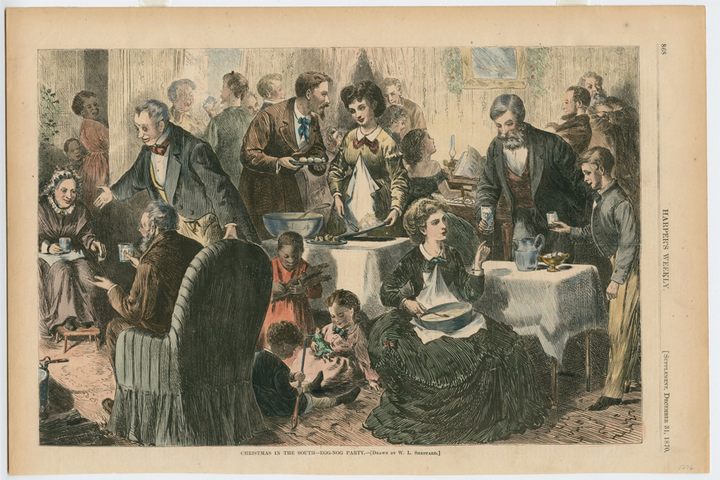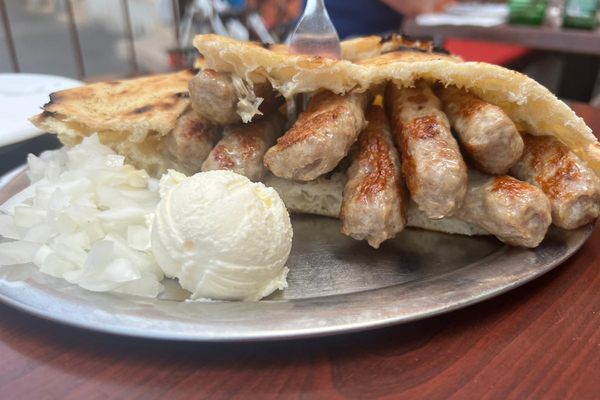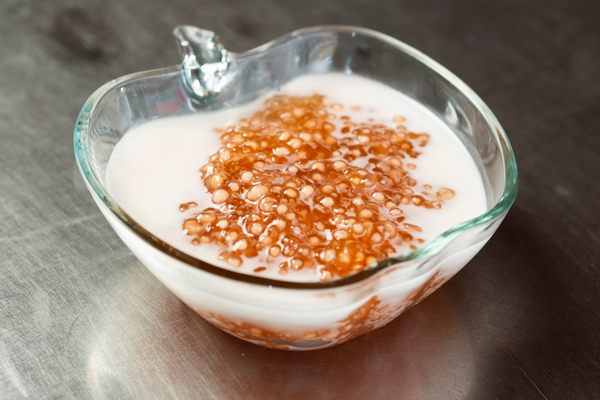

How a Midnight Feast Became a Month-Long Dining Extravaganza in New Orleans
Revel in Réveillon all December long in the Crescent City.
As a city known for its festivals and food, it’s no wonder New Orleans has a special gustatory way of celebrating the Christmas holidays. Although modern festivities no longer require celebrants to stay up all night, revelers can still indulge in the nearly 200 year old feast of Réveillon every December, as the Catholic French Creole inhabitants of the city did before them.
The first written mentions of Réveillon in France date back to the 19th century, when Catholics enjoyed a doubly festive evening: extended religious worship followed by an indulgent meal at home. Traditionally, the French celebrate Réveillon on both Christmas Eve, following Midnight Mass, and New Year’s Eve, prior to dancing in the streets.
The word “réveillon” derives from the French verb “réveiller,” which means “to awaken.” These classic French feasts included oysters, foie gras, escargot, and roasted fowl, as well as regional specialties. In Provence, they served 13 desserts: one for Jesus and one for each of his 12 Apostles.

As waves of immigrants journeyed from France to New Orleans in the 18th and 19th centuries, they brought their traditions with them. The large Catholic French Creole population in New Orleans in the mid-1800s felt right at home attending midnight mass at Saint Louis Cathedral in the French Quarter and breaking their Christmas Eve fast upon returning home. Their Réveillon menu featured both breakfast and dinner items, as the meal took place in the wee hours of the morning, including egg dishes, breads and puddings, as well as turtle soup, oysters, and grillades of veal.
According to the household budget, other delicacies were served, such as beef daube glacée, chicken and oyster gumbo, game pies, soufflés, candied fruits, and special desserts like the bûche de Noël (Yule log) or towers of croquembouche. Such luxuries were reserved for these very special holiday celebrations, and adults partook in wines, cordials, brandy, cherry bounce, frothy eggnog, fortified wines, and coffee to accompany the feast. After several hours at the table, the women and children would retire to bed, and the men would smoke cigars, drink, and converse until the sun came up.

While some traditional Réveillon dishes are still familiar to modern diners, others, such as daube glacée, are perhaps less so. Beef daube is a slow-cooked stew, and cold daube (daube glacée) is an innovative French Creole variation on the dish that is served cold, sliced on crackers or French bread. The first Creole cookbook ever written, Lafcadio Hearn’s La Cuisine Creole, was published in 1885 and includes a daube glacée recipe. Contemporary cooks can look to Chef Isaac Toups’ daube glacé recipe to make a version at home.

Grillades (fried meat) are still a staple of New Orleans menus, most often served over grits. Grillades are prepared by braising medallions of beef, veal, or pork, in a rich sauce (or “gravy,” if you’re a New Orleanian) made of the holy Creole trinity of onion, celery, and green bell peppers, plus tomatoes and beef broth. Home chefs can try Chef Alan Ehrich’s grillades and grits recipe to get a taste.
As class structures changed and Catholic traditions waned, they were overtaken by new “American” ones, such as Christmas trees, Santa Claus, and gifts for children, until Réveillon had all but disappeared from the Crescent City by the 1940s.

Half a century later, New Orleans tourism leadership partnered with the enterprising French Quarter Festivals Inc. and a handful of the city’s beloved restaurants to revive Réveillon as part of a larger holiday campaign to boost business during the typically quiet December season. The 1990s initiative transformed this at-home family feast into a variety of prix-fixe menus offered throughout the month of December. This campaign not only enticed tourists to visit New Orleans during the holiday season, but also created an opportunity for locals to reconnect to a traditional celebration—without the effort or expense of hosting the multi-course meal in their own homes.
This year, 50 restaurants across the city are participating in the Réveillon roundup, from the Riverbend to the French Quarter, Bywater to Mid-City. For a taste of the past, diners will be able to find many classic dishes available, including escargot, turtle soup, daube glacé, foie gras, oyster stew, and roast duck. Many other sophisticated examples of French cuisine are also on offer, including several seafood bisques, French onion soup, oyster vol-au-vent, pâtés, and roulades of chicken, fish, duck, and even turducken!
To qualify as a traditional Réveillon menu, participating restaurants must serve 4 to 8 courses featuring up to 4 menu items per course containing ingredients that would have been available to a Creole family during the 1800s. While respecting this guideline, many restaurants are mixing in contemporary dishes and ingredients, as well. Prices range from $38-$110 for a prix-fixe menu, offering options for diners of all budgets. Café Degas offers a mouth-watering 4-course menu for only $52, while Restaurant August tops the charts with its stand-out 7-course menu for $150.
Gulf coast seafood features heavily on this year’s menus, with several preparations of Louisiana oysters, red fish, drum, flounder, catfish, and shrimp. Other nods to local cuisine include Louisiana frogs legs at Broussard’s, smoked gulf oyster mousse at Commander’s Palace, crab beignets with saffron aioli at The Country Club, and of course, innumerable versions of gumbo and Louisiana rice. New Orleans’ own Crystal hot sauce, a staple of Louisiana tables since its founding in 1923, makes a few cheeky appearances on Réveillon menus, such as Frey Smoked Meat Co’s Crystal-brined pork ‘n’ beans or Boulevard American Bistro’s Crystal aioli served atop their crispy gulf oysters.


Other restaurants bring their own regional or ethnic twists to the menu, such as Avo’s spin on the traditional Italian Feast of the Seven Fishes, Sylvain’s contemporary American Coca Cola collard greens, or Costera’s Spanish-style menu featuring boquerones, paella, and papas bravas. Winter citrus is all over this year’s Réveillon menus, from blood oranges to locally grown satsumas. Boucherie’s menu features Louisiana strawberries, and Curio’s serves up fried green tomato chips and mayhaw pepper jelly. What’s a mayhaw? A fruity and tart berry produced by the Mayhaw tree, which grows alongside the edge of swamps in the southern United States.
No Réveillon feast would be complete without dessert, and no two dessert menus are alike in this year’s spread. Sweets range from French classics, like crême brulée and pôt de crême topped with Chantilly cream, to New Orleans standards like bananas foster and bourbon-drenched desserts. Tableau is serving up a Cajun custard pie, tarte à la bouillie, Suzie’s Soulhouse Soulfood offers a taste of the Caribbean with its sweet potato pone, and Boucherie blends old and new with its Krispy Kreme bread pudding.

Réveillon is still celebrated in other parts of the French diaspora, such as the Canadian province of Québec and French-Canadian pockets of the Northeast. As Catholic traditions have waned, for most families, the evening has become less about the midnight mass and more about the food. New Orleans’ celebration is unique in its regional specialties, and the unparalleled opportunity for visitors to sample several Réveillon menus on a visit to the city, given how many restaurants serve them all December long.
Once a celebratory meal shared with family to break a religious fast on Christmas or ring in New Year’s Eve, now an opportunity to relish a prix-fixe fine dining experience featuring Louisiana specialties, Réveillon is awakening the senses of a new generation. Try your hand at a French Creole Réveillon dish at home, or make your way to the Crescent City to participate in this delicious tradition. Get a taste of all of this year’s Réveillon menus and make your holiday reservations.
This post is sponsored by New Orleans & Company






























Follow us on Twitter to get the latest on the world's hidden wonders.
Like us on Facebook to get the latest on the world's hidden wonders.
Follow us on Twitter Like us on Facebook